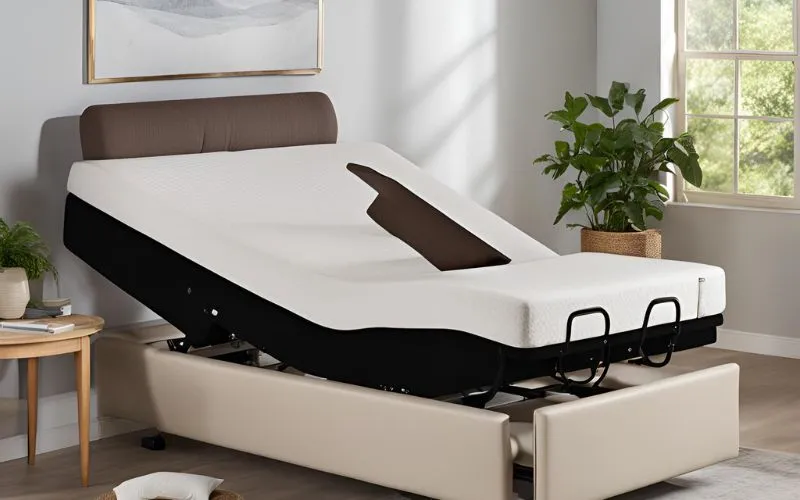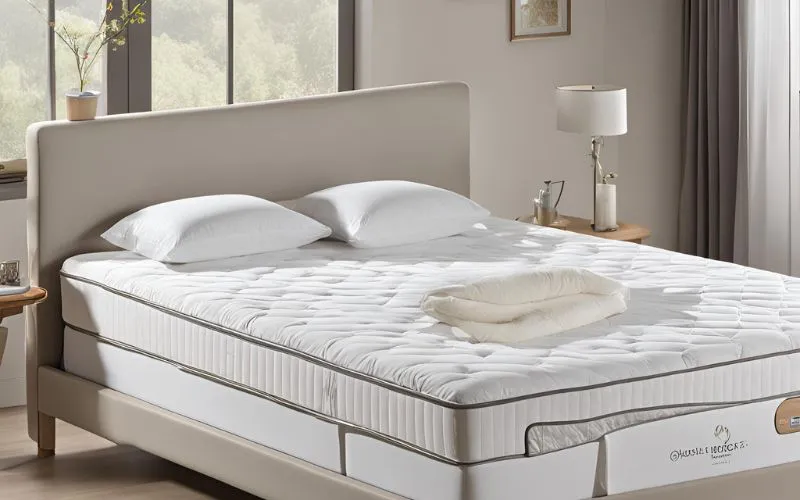Exploring Adjustable Beds for Occupational Therapy Patients

Introduction
Adjustable beds are a valuable asset in occupational therapy, providing comfort, independence, and therapeutic support for patients. This article delves into the benefits, key features, and considerations for occupational therapy patients when using adjustable beds.
What are Adjustable Beds for Occupational Therapy Patients?
Benefits of Adjustable Beds for Occupational Therapy Patients
Adjustable beds play a significant role in enhancing the quality of life for occupational therapy patients. The benefits of using adjustable beds extend far beyond mere comfort and sleep quality. Here are some key advantages:
- Enhanced Comfort: By providing the ability to adjust the bed’s position and elevation, these beds offer superior comfort, especially for patients who spend extended periods in bed.
- Improved Posture: The flexibility of adjustable beds allows patients to find optimal positions for maintaining good posture, which is crucial for long-term health and well-being.
- Better Sleep Quality: Adjusting the bed to a position that suits the patient’s individual needs can significantly improve sleep quality, leading to better rest and recovery.
- Facilitated Mobility: These beds enable patients to adjust their positions independently, promoting mobility and reducing the risk of bedsores and discomfort.
- Optimal Positioning for Therapy: The adaptability of adjustable beds makes it easier for occupational therapy interventions to be carried out effectively, ensuring that patients are in the best position for their therapy sessions.
Furthermore, adjustable beds can be equipped with specialized features such as side rails, bed exit alarms, and integrated accessories to further enhance the safety and overall experience for occupational therapy patients.
Features to Look for in Adjustable Beds
- Customizable Positioning: Adjustable beds should offer a wide range of customizable positioning options to meet the unique needs of each patient. This includes adjustable head and foot positions, as well as customizable lumbar support.
- Ergonomic Design: The ergonomic design of adjustable beds plays a crucial role in ensuring patient comfort and proper body alignment. Look for features such as multiple ergonomic positions, adjustable height, and contoured mattress surfaces.
- Safety Mechanisms: Safety is paramount when it comes to adjustable beds for occupational therapy patients. The beds should be equipped with advanced safety mechanisms, including auto-stop features, anti-pinch technology, and secure locking systems.
- Easy Accessibility: Accessibility is key for occupational therapy patients. Beds should be easily accessible, with features such as adjustable bed height, side railings, and user-friendly remote controls.
Choosing the right adjustable bed for occupational therapy involves careful consideration of various features that contribute to the overall functionality and effectiveness of the bed in a therapeutic setting.
Important Considerations for Occupational Therapy Patients
Occupational therapy patients require special considerations when using adjustable beds, such as:
- Ensuring proper support for mobility limitations
- Addressing individual comfort needs
- Integrating the bed with existing therapy routines
It is important to provide a comfortable and supportive environment for occupational therapy patients. This includes:
- Adjusting the bed to accommodate various positions that aid in therapy exercises
- Using materials that cater to sensitive skin and allergies
- Minimizing noise and providing a peaceful sleeping setting
Additionally, privacy and independence are crucial factors to enhance the patient’s experience. This can be achieved by:
- Implementing adjustable privacy screens or curtains around the bed
- Offering tools and accessories that promote self-reliance, such as bedside storage and adjustable tables
- Customizing the bed layout to empower the patient’s sense of control and autonomy
Selecting the Right Adjustable Bed
Assessment of Patient’s Needs and Condition
Assessment of Patient’s Needs and Condition
Prior to selecting an adjustable bed, a thorough assessment of the patient’s needs and medical condition is essential. This includes evaluating mobility challenges, comfort preferences, and specific therapeutic requirements to ensure the bed aligns with the patient’s occupational therapy goals.
- Evaluating Mobility Challenges:
- Assessing the patient’s ability to move and shift positions is crucial. Factors such as range of motion, strength, and coordination should be carefully considered to determine the level of support needed from an adjustable bed.
- Comfort Preferences:
- Understanding the patient’s comfort requirements is vital. This involves considering factors such as preferred sleeping positions, mattress firmness, and temperature regulation to ensure the patient can rest comfortably and maintain proper body alignment.
- Specific Therapeutic Requirements:
- Identifying any specific therapeutic needs is important. This may include pressure relief, respiratory support, or postural management. Addressing these requirements ensures that the chosen adjustable bed supports the patient’s overall health and well-being.
Consultation with Occupational Therapist
Consultation with Occupational Therapist
When selecting an adjustable bed, consulting with an occupational therapist is a crucial step towards ensuring the well-being and comfort of the patient. The occupational therapist plays a pivotal role in evaluating the patient’s individual needs and recommending the most suitable bed based on their condition. Here are some key aspects to consider during the consultation:
- Evaluating Functional Abilities: The occupational therapist conducts a thorough assessment of the patient’s functional abilities, including mobility, positioning, and range of motion. This evaluation helps in determining the specific features and adjustments required in an adjustable bed to support the patient’s daily activities.
- Customizing Supportive Features: Based on the assessment, the therapist recommends customized supportive features for the adjustable bed, such as specialized mattress types, adjustable height options, and ergonomic positioning to relieve pressure points and enhance comfort.
- Optimizing Therapeutic Interventions: Collaboration with the therapist ensures that the chosen bed complements the therapeutic interventions prescribed for the patient. This may involve discussing optimal positioning, support surfaces, and functionality of the bed to align with the treatment plan.
By engaging in a comprehensive consultation with the occupational therapist, the selection of the right adjustable bed becomes tailored to the unique needs of the patient, promoting comfort, functionality, and overall well-being.
Exploring Different Adjustable Bed Options
When exploring different adjustable bed options, there are several factors to consider to ensure that the selected bed meets the specific needs of the patient. From features and functionalities to design and user experience, each aspect plays a crucial role in determining the suitability of an adjustable bed.
- Therapeutic Features:A detailed examination of the therapeutic features offered by different adjustable bed models is essential. This includes assessing the range of motion, position customization, and support for pressure points.
- Comfort and Support: The level of comfort and support provided by the bed is of utmost importance. Factors such as mattress type, firmness settings, and ergonomic design should be thoroughly evaluated.
- Remote Control Functionality: An exploration of remote control features and ease of use is vital to ensure that patients can adjust the bed settings independently.
Furthermore, consultation with healthcare professionals and occupational therapists can provide valuable insights into the most suitable adjustable bed options for patients with specific medical conditions. Occupational therapists can offer detailed recommendations based on the patient’s mobility, support needs, and overall well-being.
By considering a wide range of adjustable bed options and consulting with healthcare professionals, patients can make informed decisions that positively impact their overall comfort and well-being.
Using Adjustable Beds for Occupational Therapy
Assistance with Daily Activities and Exercises
Adjustable beds play a crucial role in facilitating occupational therapy patients with their daily activities and therapeutic exercises. These beds offer personalized support and positioning, empowering patients to achieve greater independence and engage in various activities with comfort and safety.
- Customizable Support: Patients can adjust the bed to a position that best suits their specific comfort and support needs for performing daily activities and exercises.
- Improved Accessibility: The adjustable features of the bed allow patients to easily transition in and out of bed, facilitating activities of daily living (ADL) and exercise routines.
- Enhanced Safety: By offering a stable and secure platform, adjustable beds mitigate the risk of falls during therapeutic exercises and daily activities, promoting a sense of security for patients.
- Promotes Independence: The ability to independently adjust the bed’s positioning empowers patients to engage in activities and exercises without external assistance, fostering a sense of self-reliance.
Adjustable beds are instrumental in facilitating a wide range of therapeutic exercises that aid in the rehabilitation process. Some of the exercises that can be optimized with the use of adjustable beds include:
- Passive Range of Motion (ROM) Exercises
- Active Range of Motion (ROM) Exercises
- Weight-Bearing Exercises
- Upper and Lower Extremity Strengthening Exercises
Posture Improvement and Pain Management
Improving posture and managing pain are critical aspects of occupational therapy. Adjustable beds play a vital role in addressing these challenges by providing customizable support and comfort for patients. Let’s delve deeper into how adjustable beds contribute to posture improvement and pain management:
- Optimal Posture Support: Adjustable beds allow patients to find the most comfortable and supportive positions for their bodies, promoting proper spine alignment and reducing strain on muscles and joints.
- Pressure Relief: The versatility of adjustable beds enables patients to alleviate pressure points that contribute to pain, enhancing overall comfort and well-being.
- Customized Comfort: Patients can adjust their bed positions to their preference, whether it’s elevating the head, raising the legs, or finding the perfect angle for rest and relaxation.
- Enhanced Circulation: By elevating specific parts of the body, adjustable beds can improve blood circulation, which is instrumental in reducing pain and promoting healing.
Furthermore, the adaptability of adjustable beds caters to individual needs, making them a versatile tool in occupational therapy for addressing posture-related issues and pain management.
Enhancing Sleep Quality
Quality sleep is essential for overall well-being, and adjustable beds provide the necessary support to enhance the sleep quality of occupational therapy patients. The ability to adjust bed positions ensures optimal comfort, alignment, and support, leading to improved sleep patterns and overall restfulness.
Conclusion
Adjustable beds are integral to the comprehensive care provided in occupational therapy, promoting comfort, independence, and therapeutic efficacy for patients. By understanding the benefits, considerations, and implementation of these beds, occupational therapy practitioners can optimize the treatment experience and outcomes for their patients.




